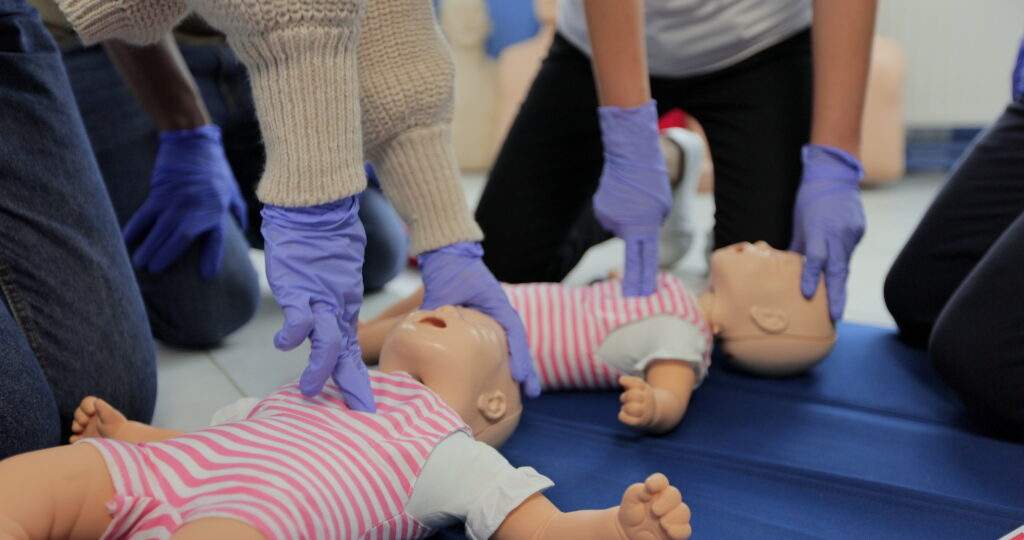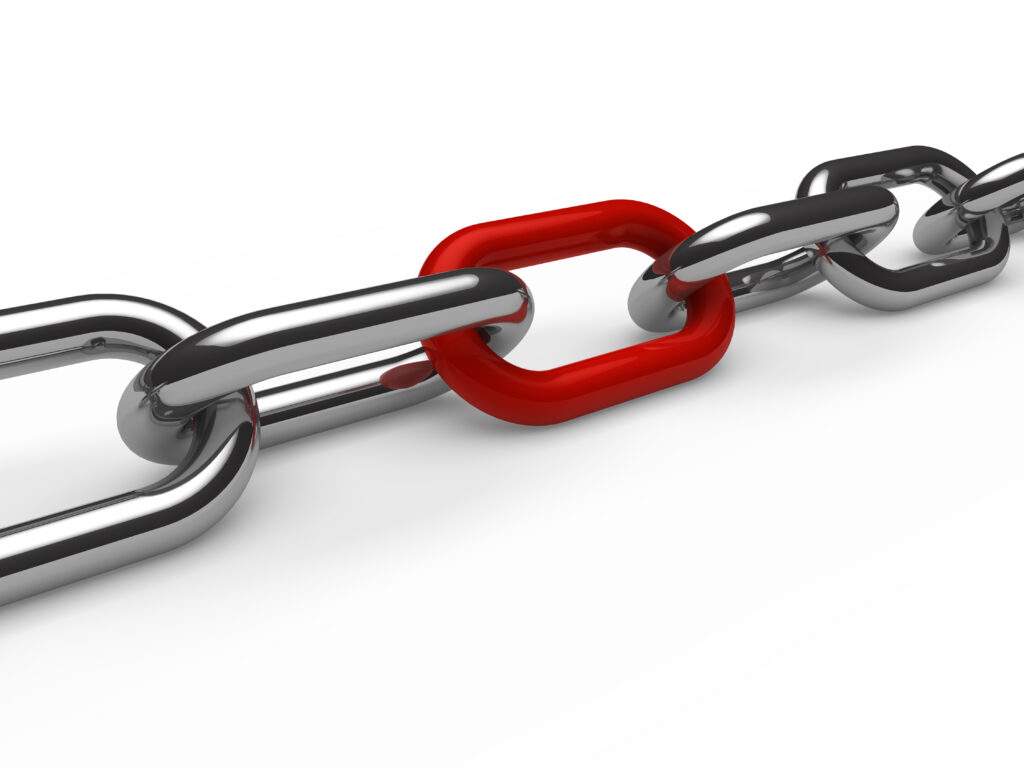Get CPR training for your team!
If you have any questions feel free to email us at info@emccprtraining.com
CONTACT ONE OF OUR EXPERTS HERE
Last Updated on July 1, 2024 by CPR Training
Implementing the pediatric chain of survival is crucial in increasing the chances of survival and reducing long-term damage in children who experience sudden cardiac arrest (SCA). This blog post aims to provide an in-depth understanding of this life-saving process, from its importance to how it differs from the adult chain.
We will delve into the prevalence and common triggers for SCA among children. We will discuss the importance of immediate CPR intervention, highlighting how early action can drastically improve a child’s survival rate. Furthermore, we’ll dissect each link within the adult chain of survival and explain why following these steps increases survivability rates during SCAs.
Additionally, we’ll explore differences between adult and pediatric chains of survival, emphasizing preventative measures that play a critical role within Pediatric Chains Of Survival. We’ll also discuss respiratory failure’s impact on infants’ circulatory failure and best practices when dealing with unresponsive victims.
Finally, the potential life-saving impact of regular training will be examined as an essential component for effectively implementing the pediatric chain of survival. Prepare yourself for a comprehensive guide designed to empower parents, caregivers, and medical professionals with knowledge that could save lives.

SCA is a life-threatening medical condition that can occur in children of any age, though it is less frequent than in adults. Though rare in kids, SCA is a serious health concern that must not be taken lightly. Causes can include Sudden Infant Death Syndrome (SIDS), trauma, accidents, and congenital heart disease.
Although rare compared to adults, SCAs still pose a significant risk for the little ones. According to the American Heart Association, approximately seven thousand minors experience cardiac arrest away from a medical facility annually. That’s a lot of tiny hearts in trouble.
Respiratory issues, sudden shock from injuries, or intense physical activity often trigger pediatric SCAs. It’s like their little hearts can’t handle the excitement. Understanding these triggers helps us better prepare and respond effectively during emergencies involving our younger population.

When a child’s heart suddenly stops, time becomes the ultimate enemy. Quick and effective CPR can be the superhero that saves their life. Remember, little ones have a better chance of survival if they receive immediate, proper resuscitation.
The American Heart Association reveals that when bystanders jump into action with high-quality chest compressions, the victim’s survival odds can double or even triple. Every minute without defibrillation decreases the chances of survival by a whopping 7% to 10%. Time is of the essence.
Early intervention with tailored CPR techniques for younger age groups is a game-changer in pediatric cases. Check out this credible source to learn more about the specialized approach to tackling sudden cardiac arrests in children. Let’s give them the best fighting chance.

The Chain of Survival is like a superhero team that saves lives during sudden cardiac arrest (SCA). Let’s meet the members:
Executing each link in this chain is like following a recipe for survival. Let’s save some lives.
While CPR principles stay the same, saving adults and kids requires different strategies. Prevention is the superhero in the pediatric world, where childproofing and water safety can be lifesavers.
Unintentional injuries like drowning or choking are the top child killers in America. That’s why childproofing homes and teaching water safety are crucial.
In infants and young children, respiratory failure often comes before circulatory failure, unlike in adults, where cardiac arrest usually takes the lead. This means CPR approaches need to be adapted for the little ones.

Regarding kids, respiratory failure can be a real troublemaker, often dragging circulatory failure along for the ride. It’s a serious situation that demands immediate action. Take action now – don’t wait.
If you encounter an unresponsive child or infant, the American Heart Association suggests doing about two minutes or five cycles of CPR before calling 911. It’s like a CPR dance to keep that blood flowing and the brain happy.
Now, let’s talk about the best practices for dealing with these little victims: First, check their responsiveness. If not, start chest compressions if there’s no breathing or just some gasping. And don’t forget to give those rescue breaths after every 30 compressions (if you’re doing it solo). Don’t leave the child alone; call emergency services ASAP.
Regular training in First Aid/CPR techniques is crucial for mastering the pediatric chain of survival. It’s like flexing your life-saving muscles.
CPR classes are the superhero training grounds for saving young lives. They teach you the right moves for tiny heroes.
Knowing the steps is great, but consistent practice builds muscle memory. Your body will know what to do when the pressure’s on, even if your brain is panicking. Talk about being a life-saving ninja.
The pediatric chain of survival consists of five links: early recognition and calling for emergency assistance, quick bystander CPR, rapid first responder defibrillation, effective advanced life support, and integrated post-cardiac arrest care. Learn more.
The five links are recognizing emergencies and calling for help, starting CPR promptly, using an AED as soon as possible, providing prompt advanced life support, and offering effective post-cardiac arrest care. Find out more.
Unlike adults, a child’s cardiac arrest often results from respiratory failure rather than heart problems, which requires different initial response strategies. Get further details here.
‘Recovery’ has been added as a new sixth link to emphasize the importance of physical rehabilitation and psychological health after surviving a cardiac event. Read more.
Recognizing the prevalence and triggers of sudden cardiac arrest in children is like finding the hidden treasure in a sea of Legos.
Immediate CPR is the superhero cape that can save lives during pediatric cases, so don’t be afraid to channel your inner Superman.
Following the chain of survival and implementing preventative measures specific to pediatric cases is like putting on a suit of armor to protect our little warriors.
Increasing survivability rates is not just a goal. It’s a mission to ensure every child gets a chance to grow up and annoy their parents for years.
To schedule a group CPR training, please contact us by clicking here or calling 1-800-695-5655.
Get CPR training for your team!
If you have any questions feel free to email us at info@emccprtraining.com
CONTACT ONE OF OUR EXPERTS HERE